Alessi invites a dozen design voices to reconsider the urn—not as an end, but as an object of presence.
What happens when some of the world’s most visionary designers are asked to create an object that’s rarely discussed, almost never celebrated, and yet profoundly universal?
With The Last Pot, Alessi brings the funeral urn—perhaps the most overlooked vessel in design history—into the spotlight. Exhibited during Milan Design Week 2025 at Biblioteca Ostinata, this collection of urns by David Chipperfield, Daniel Libeskind, Audrey Large, Philippe Starck, Naoto Fukasawa, Michele De Lucchi, Michael Anastassiades, EOOS, Giulio Iacchetti, and Mario Tsai doesn’t just challenge expectations. It redefines a category that has long existed on the periphery of design discourse.

Audrey Large for Alessi’s The Last Pot. Carved from rose-toned marble, this urn carries the fluid, unfamiliar lines of a digital sketch translated into stone. A silver detail slips through the form like a quiet interruption—elegant, strange, and slightly unplaceable. It doesn’t explain itself. It invites you to look longer.
Curated by Federica Sala and art-directed by Studio Marziale, the project was born from Alberto Alessi’s fascination with surprise and his ongoing exploration of “the container” as a timeless design typology. After a century of creating vessels—for food, tools, thoughts—Alessi turns toward one last vessel: the urn. But even here, there’s a refusal to close the door. The name The Last Pot, with the word “Last” subtly struck through in the accompanying book, signals not an end, but a quiet continuation.

Michele De Lucchi for Alessi’s The Last Pot. A house reduced to its most elemental silhouette—pitched roof, gridded façade, no door. Carved from dark-stained wood, this urn evokes structure and silence. A resting place that feels both architectural and intimate. No metaphor, just form.
Each urn in the exhibition offers a distinct voice. Fukasawa’s earthenware “house” is modest and familiar—windows, door, soft texture—an intimate metaphor for memory. De Lucchi also evokes shelter with two stylized homes: one for humans, one for pets, crafted from humble woods. Starck splits the difference between metaphysical and playful with The Last Spot, a pared-back glass and metal cube, and Bone to Bone, a metallic bone resting on a luminous pillow.
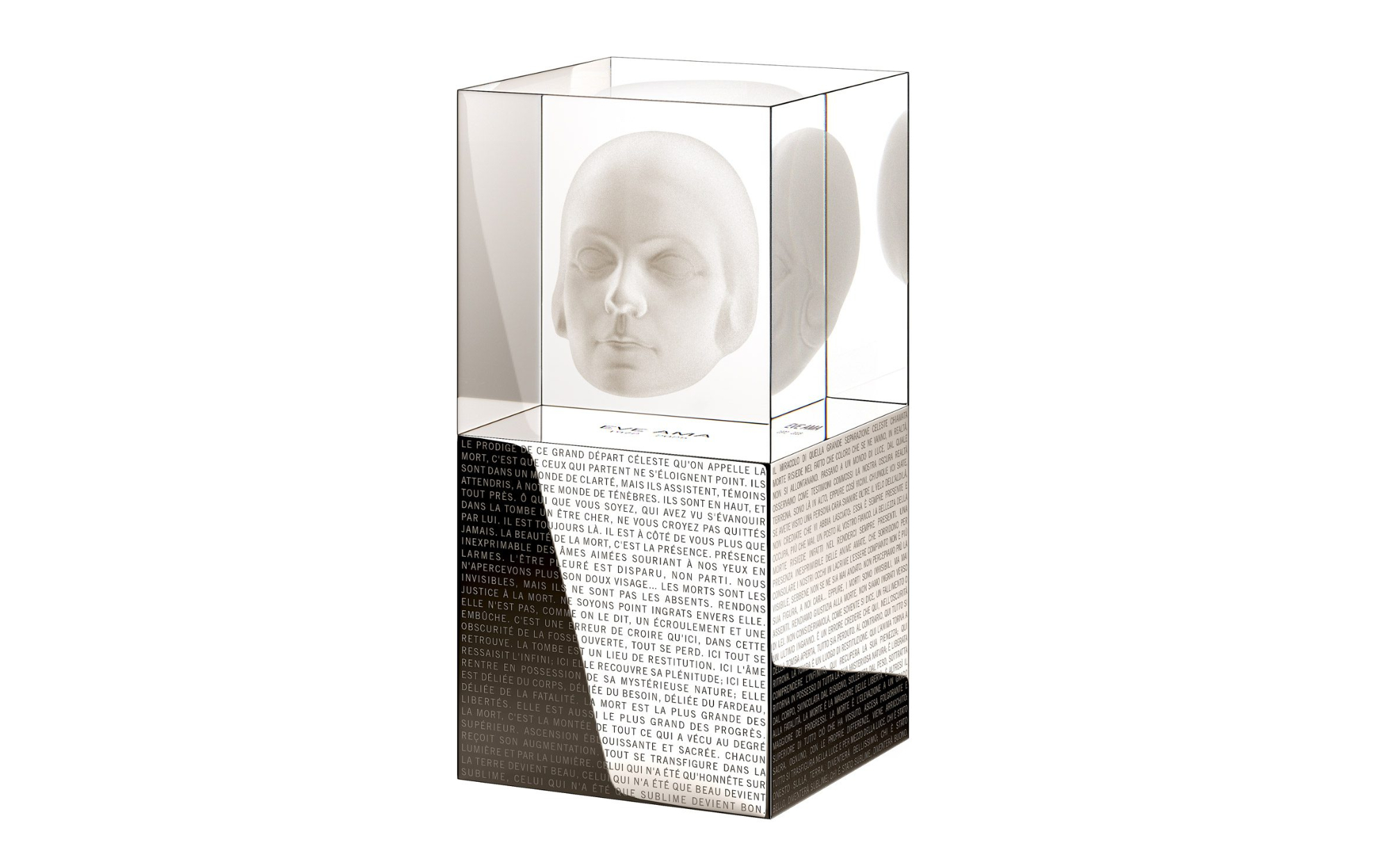
Philippe Starck, The Last Spot for Alessi’s The Last Pot. A suspended head floats inside a transparent cube, resting above a base inscribed with a stream of text. No icons. No symbols. Just presence. In Starck’s hands, the urn becomes a quiet confrontation—an object that holds absence without sentimentality, and space without conclusion.
Audrey Large, known for her digital fluency, offers a pink marble form that’s sensuous, enigmatic, and unmistakably hers. EOOS’s Totem is modular—a container that becomes three. Anastassiades and Chipperfield take a sculptural, metallic route: sleek, reflective, yet emotionally restrained. Libeskind’s Khora plays with perception, appearing two-dimensional until viewed from the side, where a cube is suspended within glass panels.
Tsai’s Hidden in Life resembles a book—quiet, reflective, easily mistaken for something else. Iacchetti’s black Teardrop balances softness and weight, sitting on a marble base that allows for different orientations. His studio also designed the exhibition setting itself: light, reflective, respectful of the object’s dual identity as artifact and emotional vessel.
The Last Pot may not be an easy exhibition—but that’s the point. It asks us to look, not away, but closer. To imagine not just a final resting place, but a form that lives on—visibly or not—through material, memory, and meaning.

Mario Tsai, Hidden in Life for Alessi’s The Last Pot. Tsai imagines the urn as a shelf object—neither decorative nor disguised, but calmly integrated into the visual language of everyday life. A quiet intimacy for those who stay.
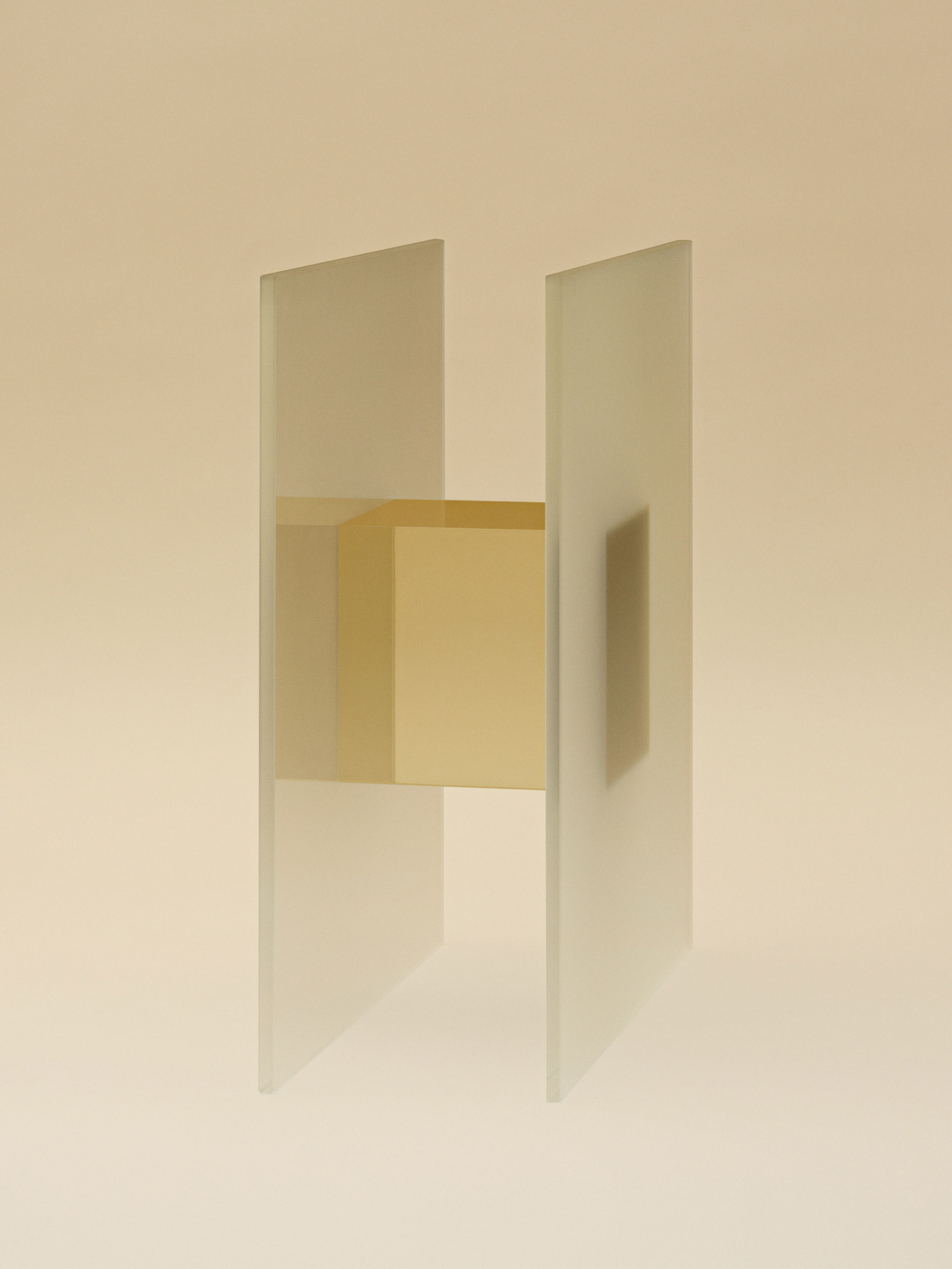
Daniel Libeskind, Khora for Alessi’s The Last Pot. A geometric meditation on permanence and presence. Seen head-on, it’s a simple square—almost two-dimensional. But step to the side, and the form reveals its depth: a floating cube held between two glass planes. Libeskind describes it as “a cube within a square,” a gesture toward immortality grounded in architectural restraint.
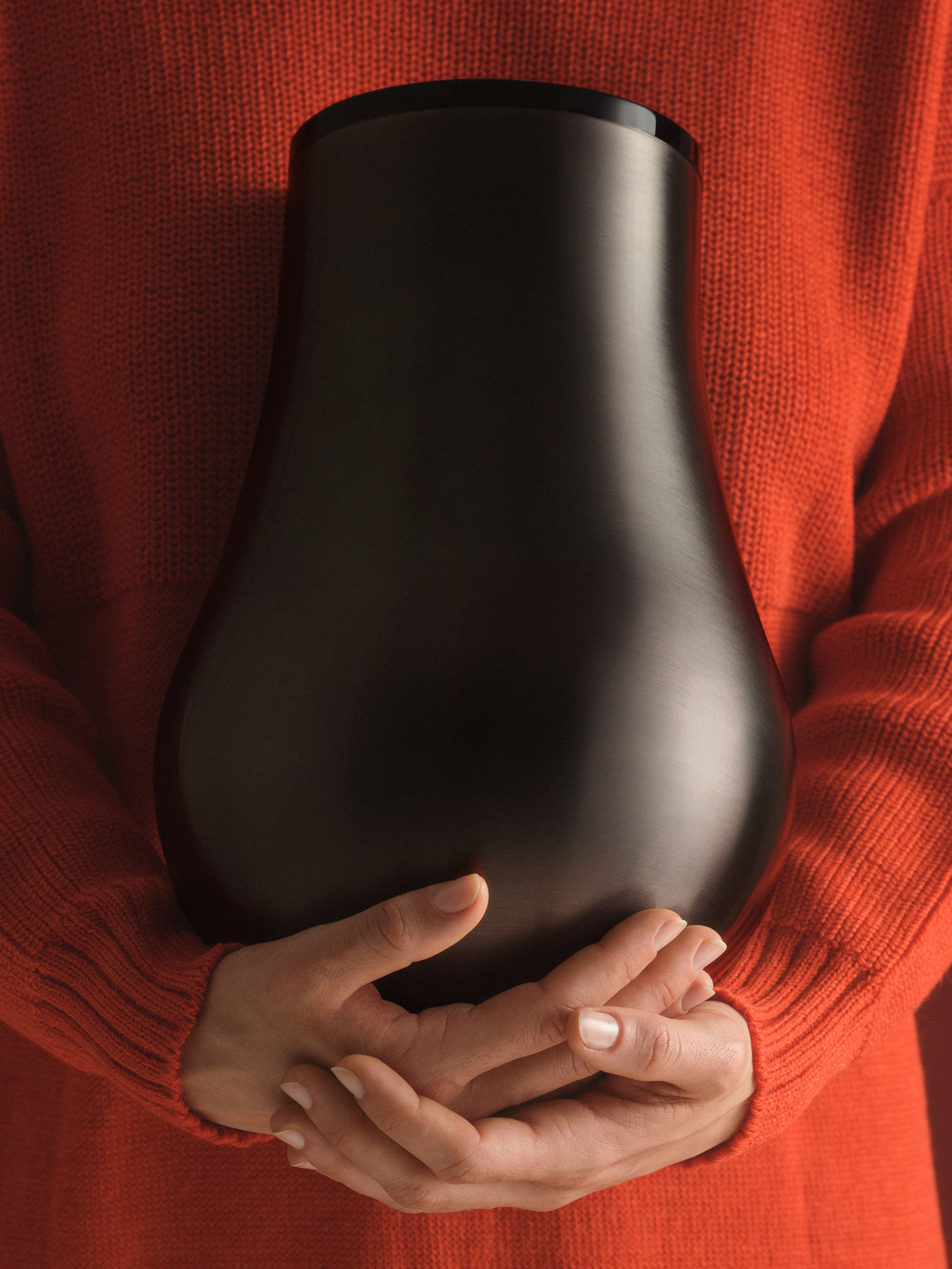
Giulio Iacchetti, Teardrop for Alessi’s The Last Pot. A container held gently, as one might cradle memory. Softly shaped in black with a satin finish, the urn rests on a marble base and can be displayed vertically or laid to one side—quietly suggesting that remembrance, too, has many postures.
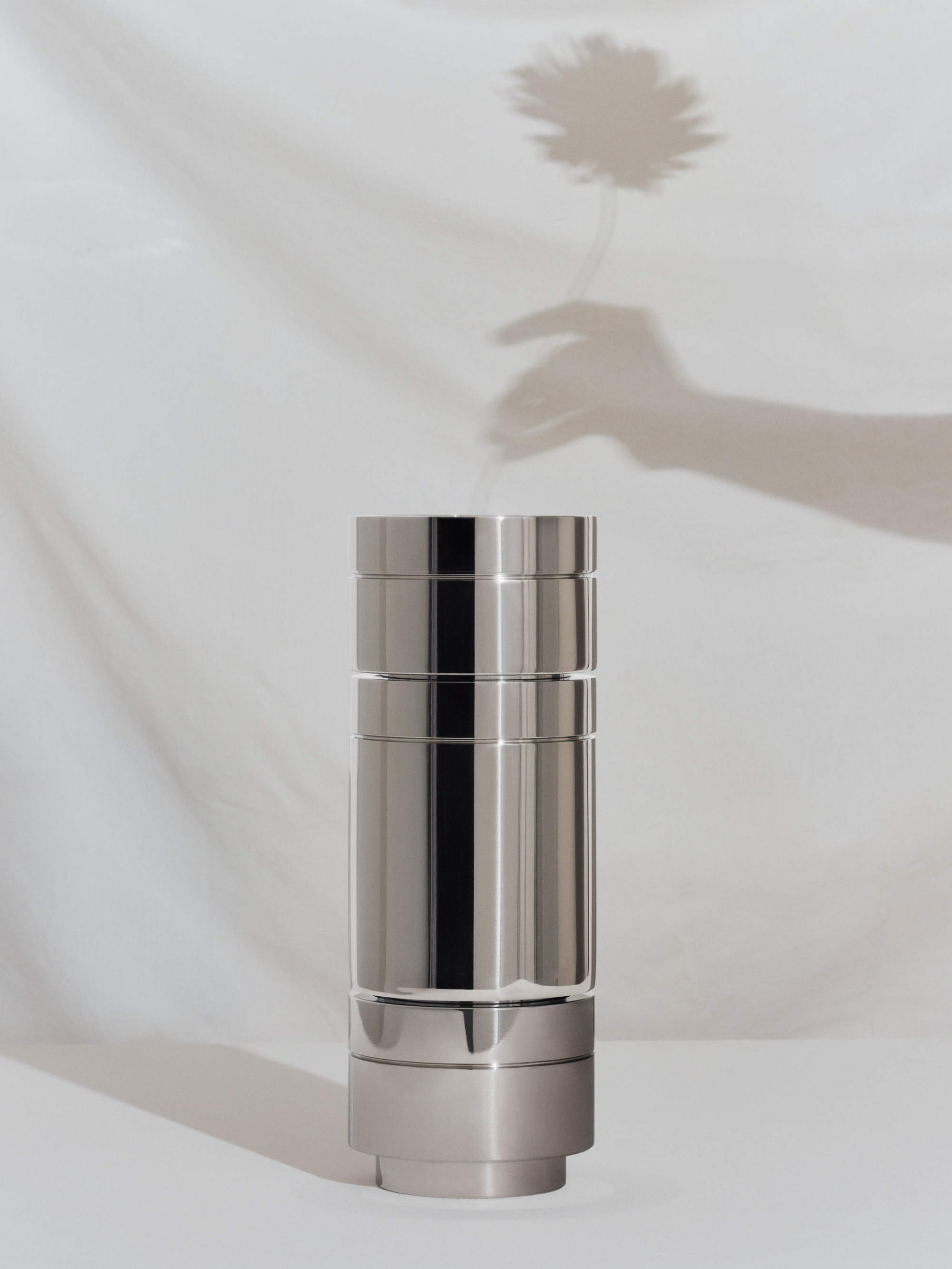
EOOS, Totem for Alessi’s The Last Pot. A modular vessel that quietly invites reflection. Composed of three stackable stainless steel containers, Totem holds space for individual rituals—dividing remembrance into parts that can be shared, separated, or brought back together. A simple form with quiet intent.
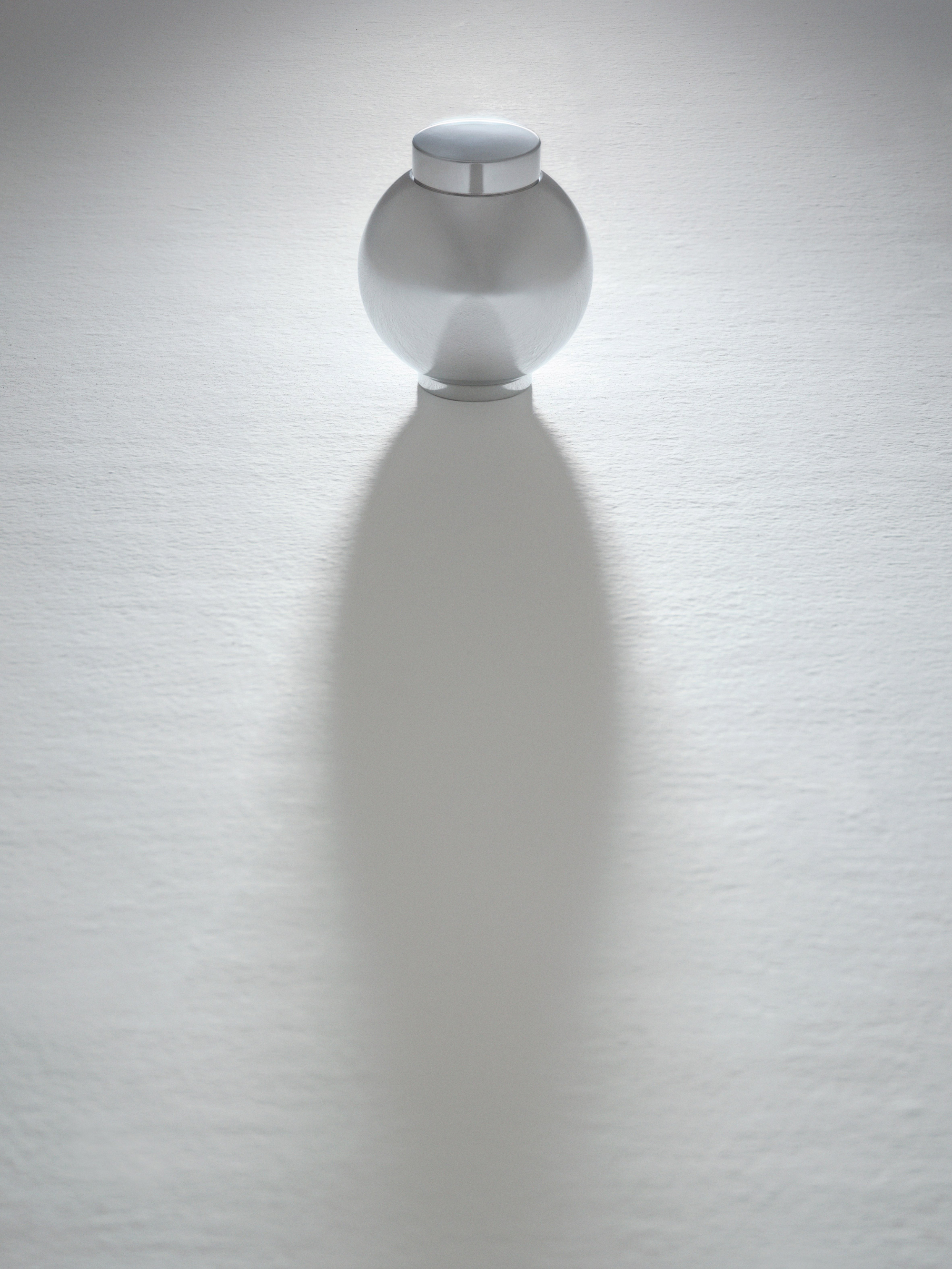
David Chipperfield, Urn for Alessi’s The Last Pot. A sphere softened into stillness. Made of silver-plated steel, Chipperfield’s design is reduced to its essentials—quiet, precise, and absent of gesture. Its discreet presence invites a slower gaze, one that meets loss not with ornament, but with calm.






